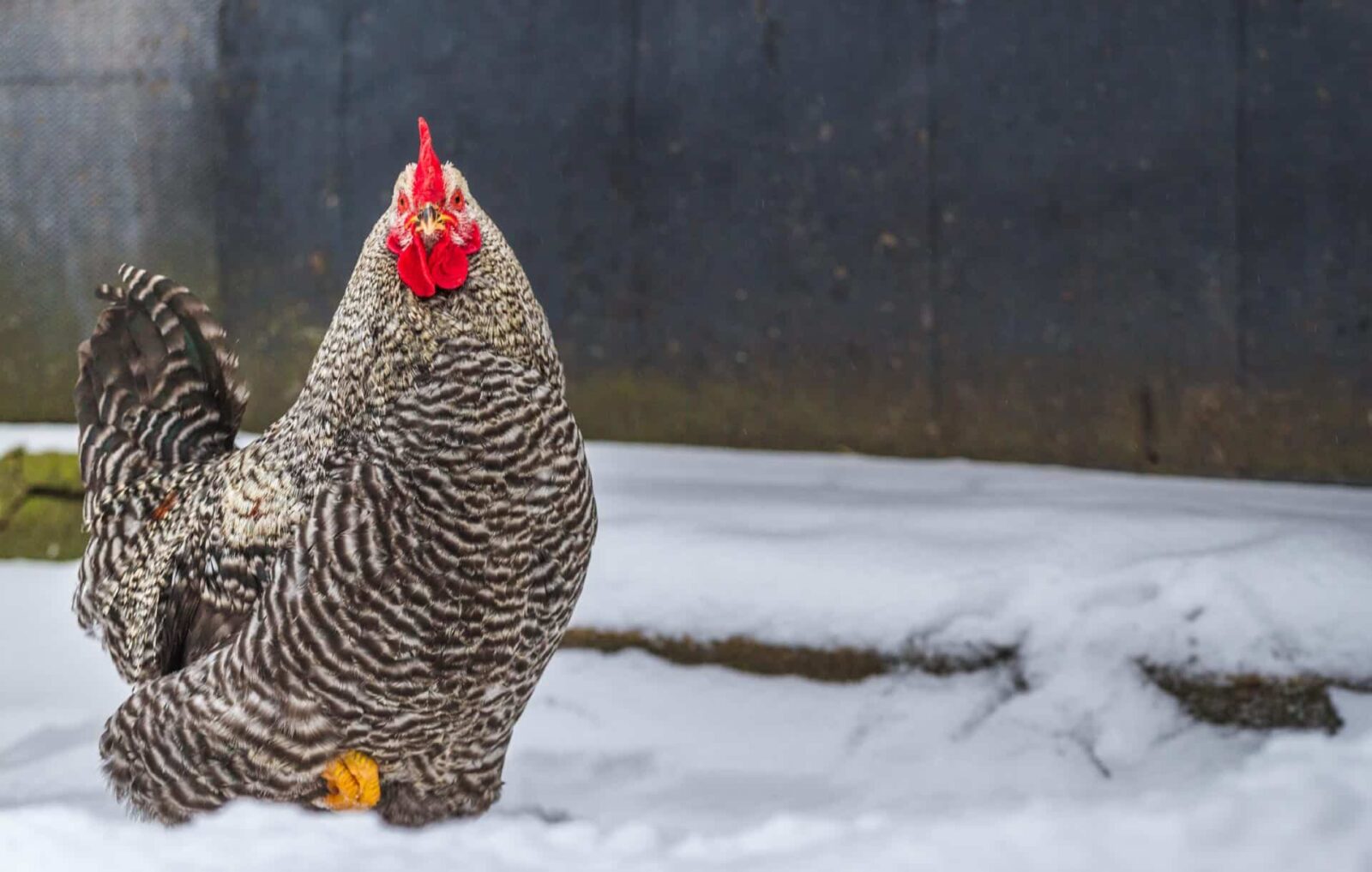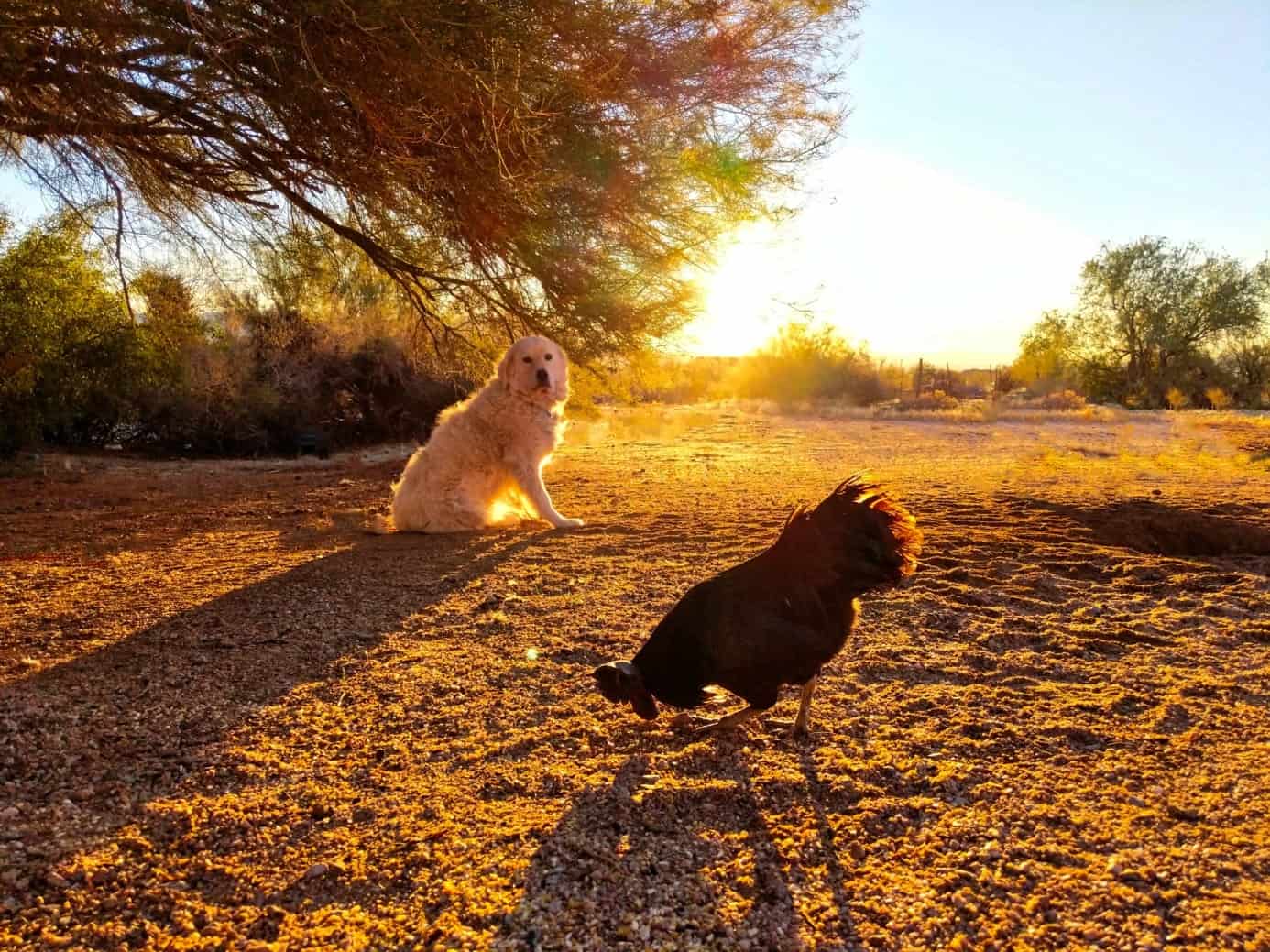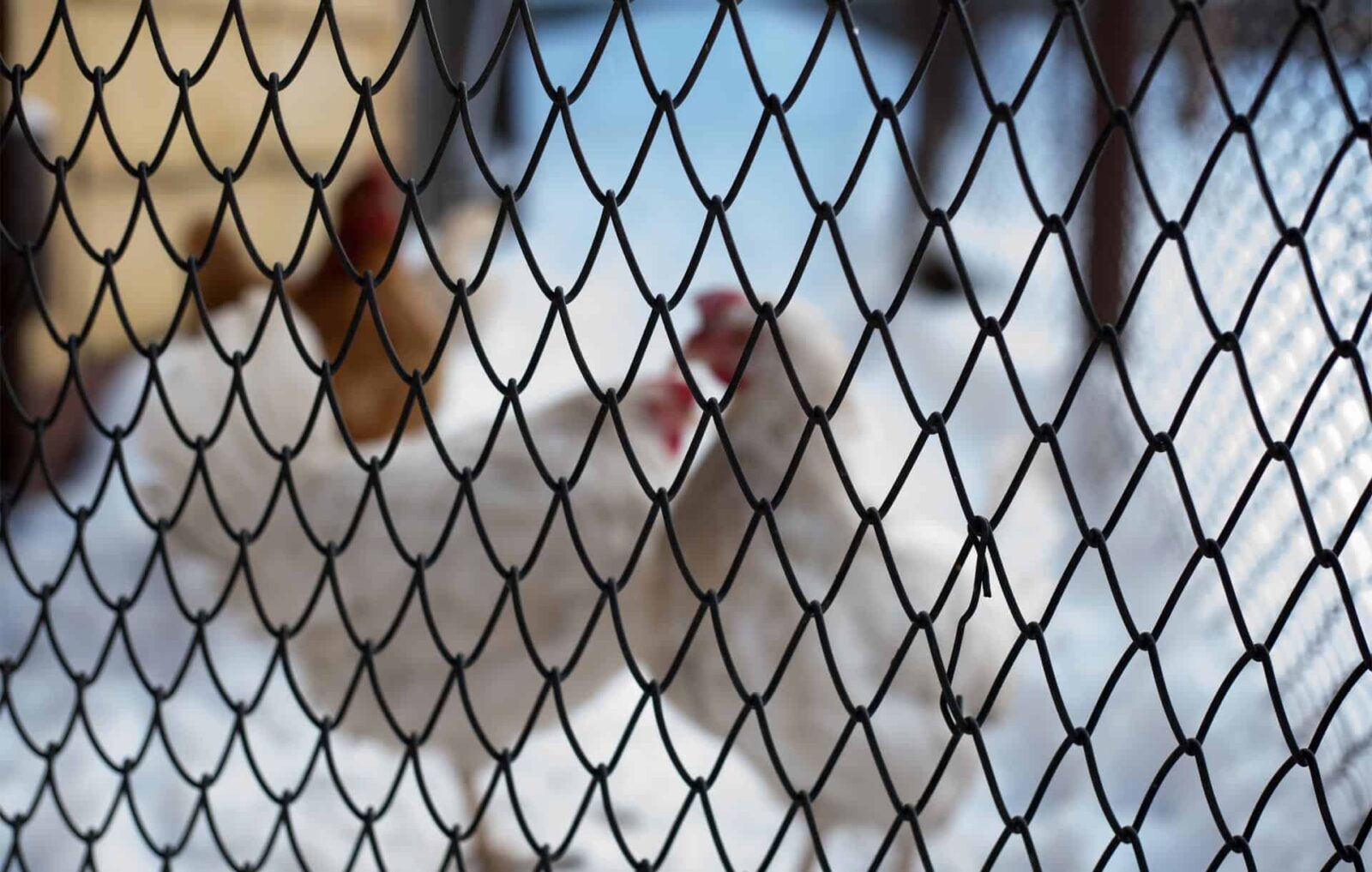The winter is a trying time for chickens and chicken owners as the low temperatures are not friendly to chickens. Some chickens may be hardy enough to go through winter on their own while others may need more care. In any case, it is important that you, like a chicken tender should take the best care of your chickens both when it’s warm and when it’s cold.
Winter causes a decline in the production of eggs in laying hens not just because of the coldness of the weather, but also because the length of daylight has shortened. You might have to supplement light for them if you wish to continue having as many eggs as you used to have.
However, despite the popular advice to always keep your chickens warm, it is important to note that it is not an easy feat to achieve, and you will need some equipment to help you achieve the warmest environment for your chickens to be lively, and to help these equipment work effectively, it all starts with the right choice of chicken breeds for your climate.
We have a complete starter guide on raising backyard chickens that is sure to teach you some tips and tricks.

Which Chicken Breeds are Best for Your Climate?
For every climate and region, there are breeds that perform best in them. A warm and humid climate is not suited for breeds that have no comb and wattle, or with extra-full plumage. These types of breeds are better suited to areas that have harsh cold climates.
Different chicken breeds have varying degrees of tolerance to the harsh weather elements and this is attributed to two things; their comb and wattle, and their plumage. These two parts of a chicken are the most visible parts that dictate the physical effect of a climate on them.
If their combs and wattle remain red and shiny in the prevailing weather, and their plumage is full and shiny, that means they are in good health condition and are most likely in the best product form. However, discoloration of the comb and wattle, or dullness of the plumage points to the chickens’ discomfort in the prevailing weather.
In cold climates, the wrong chicken breeds to raise there are those with full combs and wattles or those with light plumage. They will be easily affected by frostbite, and if not well taken care of, their production will decline. However, chicken breeds that have full plumage and little or no comb and wattle are best suited for cold climates. They can easily avoid frostbites and can have more heat due to their full plumage.
How to Keep Your Chickens Warm During Winter
Even though you may have some of the hardiest chickens in any coop, you need to supplement their natural effort to cope with the winter period. It will go a long way in helping them maintain their level of production as they’ll be comfortable. Here are some tips.
Use the Deep Litter Method of Rearing Chickens
The deep litter system is usually seen as a semi-intensive chicken rearing method. It employs the use of bedding materials to create insulation for the chickens while it also serves the purpose of collecting their poops and keeping the chicken pen clean. You, as a backyard chicken rearer, might think it too much for your flock, but it isn’t, at least in the level that we’re talking about.
Your chickens do not have to be moved from their coop, all you need to do is to start applying light litter and leave them when you bring in new ones. The litter will keep growing in thickness and the thicker it gets, the more heat it traps. When the temperature drops, it begins to release the heat to the chickens, slowly.
Use Heat Lamps
While your chickens are devising ways to help themselves get through the cold weather, you can support them by providing a heat lamp in the coop. This not only helps provide heat to them, countering the cold they feel, it also helps the laying hens in the coop perceive it as light of the day, making them continue laying eggs.
Also, for broilers, as long as there is light, they’ll keep eating. Therefore, meat producers also benefit from the heat lamp.
However, ensure to put the lamp out after some hours, as the bedding in the chicken coop would have absorbed enough heat to help the chickens through the night. Also, ensure you use electric lamps with shielded wirings as they have a reduced risk chance of causing fire compared to fuel-powered lamps.
Heat their water
It will be inhumane if you fail to pay attention to the water your chicken drinks. While they have to be clean and free of dirt, in winter, they must be protected from freezing too. Regardless of the material your chicken waterer is made of, it can allow freezing, especially when the temperature drops below 4°C. To protect the water in the waterers from freezing and making it available for your chickens to drink, heat the water.
There are many ways you can achieve these but most are stressful and require that you venture into the cold yourself. However, you can use chicken waterer heaters, that heat the water in the waterers automatically when the temperature of the water approaches freezing. When it is safe from freezing, the thermostat automatically disengages.
Insulate the Chicken coop
This is one of the oldest ways of keeping chicken warm in the winter. It involves lining the interior of the coop with materials that keep most of the cold wind out. Different materials have been used to insulate chicken coops; some individuals use old newspapers, others use clothes. Use whatever material works for you but bear in mind that insulators and bedding materials make the chicken coop susceptible to fire incidents.
Therefore, ensure that you are careful in your choice of heating lamps when they are used to provide heat to your chickens.
Feed them in the evenings
If there’s one sure thing that keeps the body working, it is the digestion of food substances. Feed your chickens with nourishing feed and keep their digestive system working for some hours at night. This helps them generate internal heat which is trapped by their plumage and keeps them warm for a considerable time.
Help them Roost
Chickens love to roost, it helps them get a full view of what is happening around them and more importantly, it helps them get away from the cold floor. On the roost, chickens get close to one another to share body heat. This is their natural response and mechanism of coping with cold weather. However, you can help them by reducing them by installing horizontal planes in the coop. It doesn’t matter if there are too many of the planes, the chickens will roost together naturally.
The Best Heat Providers for Your Chickens During Winter
When it comes to the safety of your chickens, you can never be too careful. The cold weather has been one of the hards battles to fight, constantly making sure that they have an adequate amount of insulation to protect them. Below I have listed out a few items that we have seen great success with keeping our chickens warm during the cold winter months.
Best Chicken Coop Insulator
MagJo Pet Excelsior Aspen Shaving Nesting Liners
Your chickens might not have to roost so often if they have the right bedding material for winter in their coop. Bedding materials absorb heat and release the same heat but in little amounts during cold spells. These are beneficial to your chickens as it helps them get through the night in warmth.
MagJo Pet Excelsior Aspen Shaving Nesting Liners are one of the best insulators you can use for your chicken coop as they are excellent for bedding materials. They are soft and relatively compact, and they do not give off dust. It also makes cleaning the coop easier as they are lined with papers that collect chicken poop instead of allowing the poop to stay on the aspen insulators’ surfaces.
They are also good cushions for eggs. Your laying hens will love them as they are comfortable and soft, and they provide warmth in the cold, making their egg-laying experience easier. With it, you are bound to have fewer cracked eggs every morning.
Pros
- Provides excellent insulation against cold during winter
- Release heat to chickens when temperature drops
- Makes coop cleaning easier
- Acts as a good cushion for eggs
Cons
- May accelerate burning in case of a fire incident in the coop
Best Heat Plate for Chicks
K&H Pet Products Thermo-Peep Heated Pad Tan
Most farmers and backyard chicken rearing enthusiasts agree that chickens are hardy and most times do not need humans to interfere in their survival as much as we do. However, we forget that we have domesticated these cute girls and they need to be taken care of, especially the young ones.
Winter can be especially hard for chicks and they are not easily warmed up after they have gotten cold like the adult chickens. To help them during these cold weather spells, K&H Thermo-Peep Heated Pad Tan is an excellent choice of help.
The K&H Thermo-Peep Heated pads are suitable for use both indoors and outdoors. They do not take up space and can be used either on the floor or placed against the wall. Your chicks only have to be on it or close to it, to feel the warmth. It also has no bulbs and consumes little power.
Pro
- Usable both indoors and outdoors
- Can be placed on the floor or on the wall
- Low power consumption
- Meets USA/CA electrical safety standards
- Can provide heat to as much as 20 chicks
Cons
- Most effective indoors.
Best Chicken Feed for providing Heat During Winter
Hatortempt Non-GMO Dried Mealworms
Keep the digestive engine running in your chickens and help them generate heat for some part of the night. For effectiveness, feed them with Hatortempt Non-GMO Dried Mealworms when you have the light on in their coop and they will remain warm for a long time, even after the lamp is out.
Chickens’ bodies are capable of retaining heat due to the presence of feathers on them. The internal heat they generate from consuming Hatortempt Dried mealworms will remain for hours. This snack does not just do that, it also supplies them with additional nutrients, such as proteins and fats, which are not easy to digest.
Your chickens get nourished and warm with Hatortempt Non-GMO Dried Mealworms.
Pros
- Provides extra nourishment to chickens
- Keeps Chickens warm by introducing materials that kickstarts digestion
- Made from all-natural sources
Cons
- May make chickens overfeed and lead to nutrients overload.
Best Heat Lamp for Chickens
Premier Carbon Fibre Heater for Poultry
One of the effective ways to keep chickens happy and warm when the outside is cold and hard, is to provide heat, and what better way is there to achieve this than through a heat lamp? It serves two purposes; provide light and provide heat.
The Premier Carbon Fibre Heater for Poultry is one of the best heat lamps for chickens, and one of the best heat providers for chicken in winter. It ensures the safety of chickens while it provides the warmth they need to continue their impressive production. Its bulb is made of carbon fibre and produces at least 5 times more heat than conventional bulbs. The bulbs also uses about 98% of its wattage to provide heat.
It is easy to control, its cylinder is lined with a reflecting surface to improve the reflection of light and heat towards the chickens, making it efficient. It also has an automatic off switch that gets activated when the heater tilts to about 30 degrees from its hanging position.
Your chickens are saved from the heat the bulb emits by a grill that covers the bulb.
Pros
- Efficient heat provider for chickens
- Has features that ensures chickens’ safety around it
- Has an auto-off feature in case chickens knock it off
Cons
- Not suitable for use in chicks brooding.
Best Chicken Water Heater
Farm Innovators Model HP – 125 Heated Base
Sipping hot liquid is a classic way of getting rid of cold. Chickens can also borrow from this practice. They can use water heaters that are specifically made to prevent their water from freezing during winter. One of the best chicken water heaters is the Farm Innovators Heated base.
This chicken water heater heats water in chicken waterers when they approach the freezing point. It then automatically turns on its thermostat into action. With its 125 watts power consumption, it raises the temperature of the water in no time, making it drinkable for the chickens and providing heat for them.
Farm Innovators Heated Base has a flat top into which metal waterers can fit and leave some space around it where the heat dissipates to the environment. Bedding materials can absorb this heat for chickens’ use later on.
Pros
- Heats water in the waterer and the environment
- Automatic on and off thermostat
- Prevents water from freezing during winter
Cons
- Only usable with metallic chicken waterer and founts
- Consumes a sizeable amount of power
Frequently Asked Questions on How to Keep Chicken Warm During Winter
What Temperature is Too Cold for Chickens?
The way chickens and humans handle cold is totally different. Chickens, some breeds actually, are built to tolerate cold that goes as low as the tens. While at this temperature humans are probably never going to step out and the house heaters are constantly burning, chicken may be able to venture outside for some time.
Ascertaining a specific temperature figure for chickens; cold endurance is impossible. Instead of finding this out, keep your chickens’ environment as warm as possible.
How Long Do You Keep A Heat Lamp on Chickens?
Chickens can be uncomfortable with too much heat. That makes you wonder how long the heat lamp should be on. The truth is, it all depends on how cold it is outside, however, no matter how short the lamp was on, as long as it provided some heat, it is beneficial to your chickens.
Target a time range of 30 – 40 minutes to leave the heat lamp on. The heat it produces can help chickens get heat through the night.
How Do You Keep Chickens Warm Without A Heat Lamp?
Heat lamps are not the only way to keep chickens and chicken coops warm. You can use the deep litter system to keep chickens warm, insulate the coop but keep it ventilated at the same time. You can also use water heaters to keep the chickens’ water warm.
Can Chickens Freeze to Death?
Ordinarily, chickens can withstand extreme coldness. Moreover, there are chickens in Siberia and Alaska. However, chickens that are in poor health can be killed during winter. Not because the cold was too much, but because they were not in a good health state to tolerate it.
Conclusion
Prepare your chickens for winter by making sure their coop is well insulated and ventilated for the season. You do not want to block air passage and cause ammonia build-up in the coop, so let some air in. Also, do not forget to use good bedding material, they are important heat absorbers and providers.


















Leave a Reply